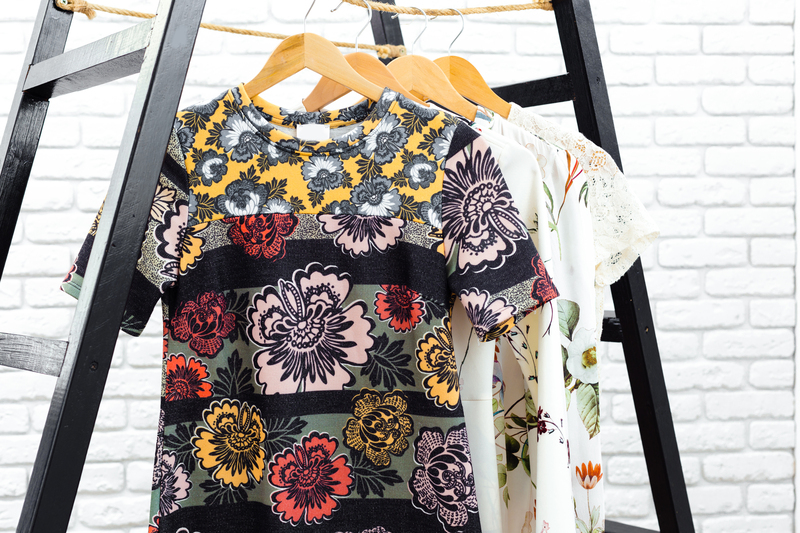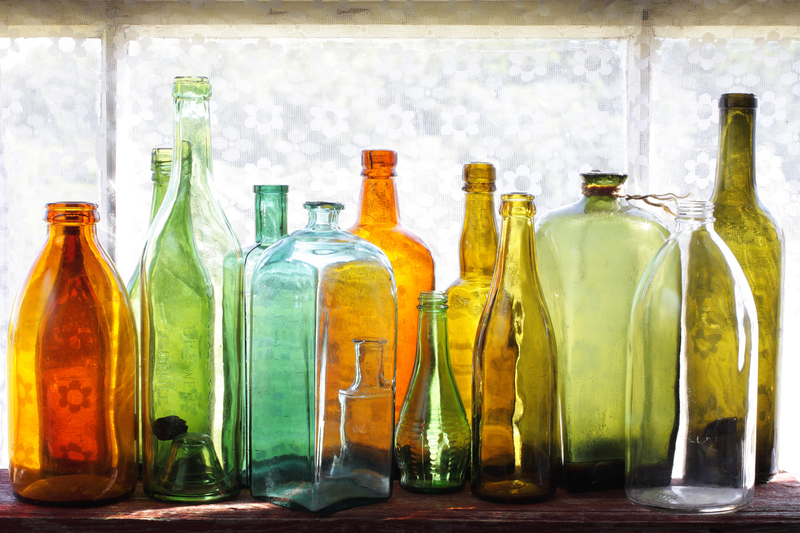Best Practices for Environmentally Safe Cookware Disposal
In today's world, sustainability and eco-conscious living have become top priorities for individuals who care about the planet. Environmentally safe cookware disposal is an important, yet often overlooked, aspect of reducing waste and minimizing our environmental footprint in the kitchen. Whether you're upgrading your pots and pans or saying goodbye to worn-out utensils, it's crucial to understand the environmentally responsible ways to dispose of cookware. This comprehensive guide will explore best practices for eco-friendly cookware disposal, the challenges of recycling, creative upcycling ideas, and alternatives to keep your cookware out of landfills.

Why Responsible Cookware Disposal Matters
Improper disposal of old cookware can have far-reaching impacts on both local ecosystems and global environmental health. Many types of cookware, such as non-stick pans, can leach toxins into the soil and water supply when dumped in landfills. Moreover, the energy and resources used to manufacture new cookware make it vital to seek sustainable alternatives to disposal.
- Landfill waste: Cookware materials can take decades or even centuries to break down, leading to unnecessary landfill accumulation.
- Environmental contamination: Some coatings or metals used in cookware may leach harmful substances.
- Lost recycling opportunities: Many cookware materials are recyclable if processed properly.
By adopting best practices for disposing of cookware responsibly, you can help conserve resources, reduce pollution, and encourage a sustainable future.
Types of Cookware and Their Environmental Impact
Before diving into eco-friendly cookware disposal techniques, it's important to understand the materials commonly found in kitchen items and their potential environmental impact.
1. Aluminum
Aluminum is lightweight, corrosion-resistant, and widely recycled. However, anodized aluminum pans may have coatings that affect recyclability.
2. Stainless Steel
Stainless steel is highly durable and 100% recyclable. It is one of the most sought-after metals in recycling centers and possesses significant salvage value.
3. Cast Iron
Cast iron cookware lasts generations but eventually wears out. Fortunately, it is easily recyclable and highly valued as scrap metal.
4. Non-Stick (Teflon, PTFE, Ceramic-Coated)
Non-stick pans may contain chemicals like PTFE or PFOA that are not desirable in landfills or incinerators due to potential toxin release. Ceramic-coated pans, often marketed as green alternatives, present fewer hazards but must still be handled properly at disposal.
5. Copper
Copper offers superior conductivity but can react negatively with certain foods over time, leading consumers to discard old pieces. Copper has strong recycling markets, but often features other materials that must be separated.
6. Glass and Ceramics
Bakeware, casserole dishes, and glass pots are common but hard to recycle in standard municipal curbside programs due to high melting points and the risk of contamination.
Preparing Cookware for Environmentally Safe Disposal
- Clean thoroughly: Remove any food residue and wash the cookware to minimize contamination risks at recycling centers.
- Disassemble composite items: If your cookware contains mixed materials (e.g., metal with plastic handles), separate them as much as possible before disposal.
- Remove non-recyclable accessories: Lids, knobs, bakelite, or silicone parts may need to be disposed of through different streams.
- Check for hazardous coatings: Pans with non-stick, PTFE, or PFOA coatings require special handling; do not burn or break these items.
Options for Environmentally Sound Cookware Disposal
1. Cookware Recycling
The recycling of cookware is one of the most environmentally responsible disposal options. However, not all municipal recycling programs accept pots, pans, or bakeware, so it's essential to contact your local recycling center beforehand. Here's how to approach cookware recycling:
- Metal Cookware: Items made of pure aluminum, stainless steel, copper, or cast iron are generally accepted by scrap metal recyclers.
- Non-Stick and Coated Pans: If the pan is metal underneath, check with the recycler to see if coatings are acceptable.
- Specialty Drop-Offs: Search for special appliance or metal recycling events.
Remember: Never place cookware directly into single-stream curbside recycling bins unless explicitly allowed. The toughness, weight, and shape of cookware can damage sorting equipment at municipal facilities.
2. Donation and Reuse
If your cookware is still functional, donating kitchenware is often the most sustainable choice. Many community organizations, shelters, thrift stores, and online "buy nothing" groups seek used cookware in good condition.
- Local non-profits and charities
- Community kitchens and shelters
- Online marketplaces and neighborhood groups
Before donating, ensure items are free of rust, cracks, or hazardous coatings. This second life for cookware keeps them out of landfills and benefits your community.
3. Upcycling Cookware
For creative individuals, upcycling old cookware is a fun and eco-conscious way to reduce waste. Repurposing old pots, pans, or bakeware can turn kitchen relics into useful or decorative household items. Here are some upcycling ideas:
- Garden planters or flower pots - Use large pots or cast iron pans as rustic garden containers.
- Bird baths or feeders - Old skillets and bowls can be used in the garden for wildlife.
- Wall art - Turn vintage pans into unique wall decor or clocks.
- Storage - Repurpose deep pots as pantry or garage storage bins.
Get creative and share your upcycling projects online to inspire others!
4. Manufacturer Take-Back Programs
Some cookware brands are committed to sustainability and offer take-back or trade-in programs for old pots and pans. These programs ensure items are recycled or disposed of properly rather than ending up in the trash.
- Contact your cookware brand to ask about mail-back, drop-off, or exchange incentives.
- Leading brands like Calphalon, GreenPan, and some Le Creuset outlets have sustainable disposal initiatives.
*Always read program details for requirements such as product condition or proof of purchase.
5. Hazardous Waste Facilities for Non-Stick Pans
Cookware with non-stick coatings (e.g., Teflon, PTFE, PFOA-coated) may not be safe to recycle with other metals. Local hazardous waste facilities may accept coated pans for special handling, preventing harmful toxins from entering the environment.
- Check your city's hazardous waste disposal guidelines.
- Never incinerate non-stick cookware due to toxic fumes.
Commonly Asked Questions on Environmentally Safe Cookware Disposal
Can I put old pots and pans in my curbside recycling?
In most cases, no. Pots and pans can jam machinery at standard recycling facilities. Only bring them to specifically designated metal recycling centers--call ahead to ensure acceptance.
What about broken glass or ceramic cookware?
Regular glass and ceramic bakeware have higher melting points than glass bottles and jars, so curbside programs often do not accept them. Instead, wrap the pieces in newspaper and place them with non-recyclable trash unless your local recycling accepts dishware.
When is it time to replace cookware?
Replace cookware if you notice warped bases, significant rusting, deep scratches, flaking non-stick coating, or cracked handles. Damaged cookware can present both cooking and contamination risks.
Are all metal pans recyclable?
Pure metal pans (aluminum, stainless, copper, cast iron) are recyclable, but coatings, plastic handles, or attachments might limit recyclability. Remove non-metal components whenever possible to maximize their recycling value.
Can non-stick pans be recycled?
Only the metal part of the pan (after removing non-stick coatings) is potentially recyclable. Many recycling centers do not accept non-stick pans at all. Check with specialized facilities or hazardous waste centers.

Top Tips for Eco-Friendly Cookware Disposal
- Plan ahead: Research local recycling guidelines before tossing cookware in the trash.
- Donate good-condition items: Help your community and reduce waste by donating usable cookware.
- Upcycle for new life: Get creative with DIY projects to avoid landfill waste.
- Use take-back programs: Leverage manufacturer trade-ins whenever possible to ensure responsible recycling.
- Handle non-stick with care: Do not incinerate or break up hazardous materials--find proper facilities.
Conclusion
Responsible and environmentally friendly cookware disposal is essential to reducing kitchen waste and supporting a greener future. With a little research and creativity, everyone can participate in sustainable practices--whether it's through recycling, donation, or upcycling. By understanding the best practices for environmentally safe cookware disposal, you are making a positive impact on your community and the planet.
Remember: Every piece of cookware that's recycled, donated, or upcycled instead of sent to a landfill helps conserve resources, reduce pollution, and inspire others toward a zero-waste lifestyle. Embrace these best practices and spread the word about eco safe cookware disposal in your home and community!
Further Resources
Adopting these eco-friendly cookware disposal strategies ensures you're cooking up sustainability in your kitchen for years to come!
